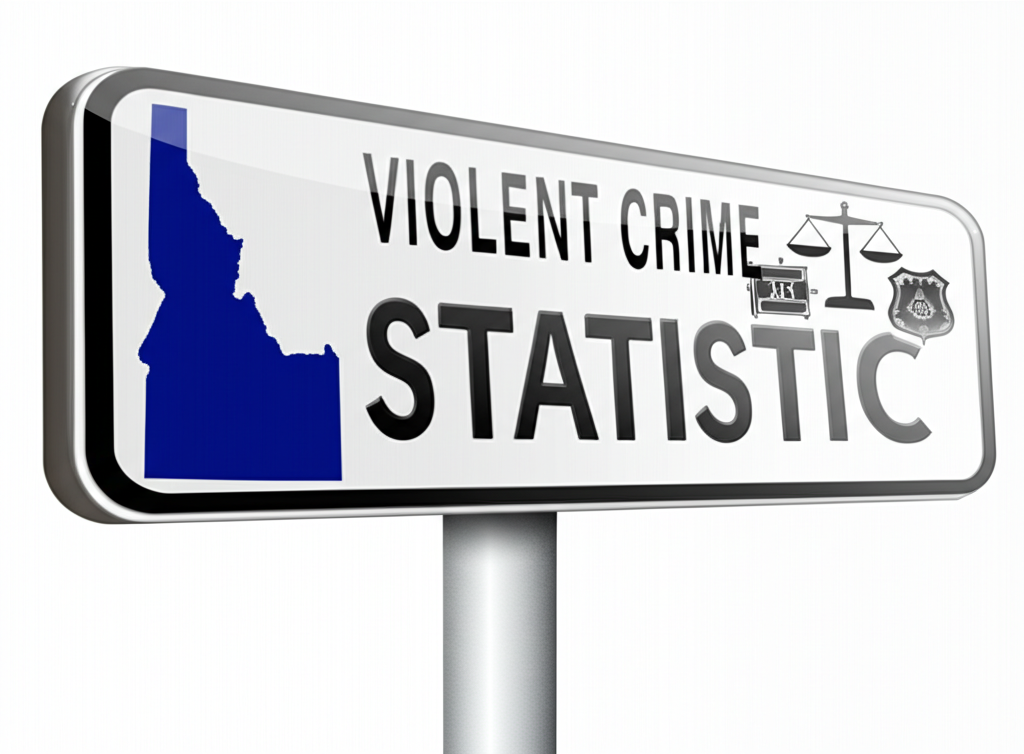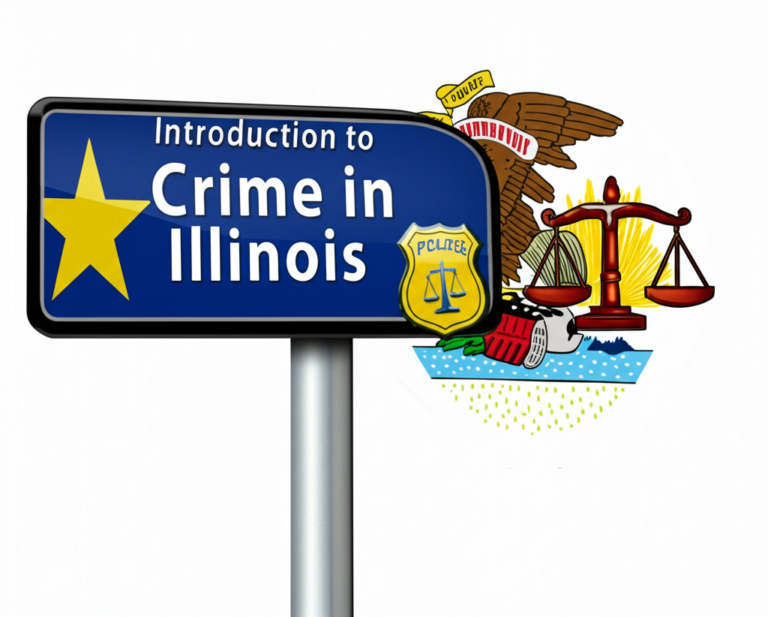Idaho Crime Rate: Statistics, Trends, and Safest Cities
Known for its rugged landscapes and outdoor lifestyle, Idaho maintains a reputation as one of America’s safer states. However, understanding the state’s crime statistics helps residents and visitors make informed decisions about public safety. While major cities see higher crime volumes, many rural communities report minimal incidents thanks to effective law enforcement and close-knit neighborhoods.
The Gem State’s crime rates consistently fall below national averages, particularly for violent offenses. Still, property crimes like theft occur more frequently, especially in tourist areas and growing urban centers. This introduction provides context for Idaho’s crime landscape before diving into specific statistics and trends in the sections that follow.
Idaho Crime Rate Overview

Idaho’s crime rate presents an interesting picture of safety in the Gem State. With 20,502 total crimes reported in 2023, the numbers break down to 4,598 violent crimes and 15,904 property crimes. When calculated per 1,000 residents, these translate to rates of 2.34 for violent offenses and 8.09 for property-related incidents.
Comparing Idaho’s crime situation to national averages reveals some encouraging trends. The state’s violent crime rate (2.34) sits significantly below the U.S. median of 4.0, while property crime (8.09) is less than half the national figure of 19.0. This means Idaho residents generally face lower risks than Americans in most other states.
Breaking down the numbers further shows assault accounts for the majority of violent crimes (1.79 per 1,000), while theft dominates property crimes (5.92 per 1,000). The chances of becoming a victim stand at 1 in 427 for violent crime and 1 in 124 for property crime – both better odds than national averages.
- Total crimes reported: 20,502
- Violent crimes: 4,598
- Property crimes: 15,904
| Crime Type | Idaho Rate | National Median |
|---|---|---|
| Violent Crime | 2.34 | 4.0 |
| Property Crime | 8.09 | 19.0 |
Violent Crime Statistics in Idaho
Examining violent crime in Idaho reveals important patterns about safety in the state. According to FBI data, Idaho recorded 4,598 violent crimes in 2023, with assault being the most common offense at 3,523 reported cases. This translates to a rate of 1.79 incidents per 1,000 residents.

More severe crimes occur less frequently, with homicide at just 46 cases (0.02 per 1,000) and robbery at 186 cases (0.09 per 1,000). The state’s rape rate of 0.43 per 1,000 slightly exceeds the national average of 0.38, representing an area where Idaho could improve.
Overall, Idaho residents have a 1 in 427 chance of experiencing violent crime – significantly better than national averages. The state’s violent crime rate of 2.34 per 1,000 compares favorably to the U.S. median of 4.0, making Idaho one of the safer states for these types of offenses.
- Chances of becoming a victim: 1 in 427
| Crime Type | Reported Cases | Rate per 1,000 |
|---|---|---|
| Murder | 46 | 0.02 |
| Rape | 843 | 0.43 |
| Robbery | 186 | 0.09 |
| Assault | 3,523 | 1.79 |
Property Crime Statistics in Idaho
Property crimes make up the majority of criminal activity in Idaho, accounting for 15,904 of the state’s 20,502 total reported crimes in 2023. The most common offense is theft (also called larceny), with 11,635 cases reported last year – a rate of 5.92 incidents per 1,000 residents.

Burglary occurs less frequently but still represents a significant concern, with 2,767 reported cases (1.41 per 1,000). Meanwhile, motor vehicle theft affects Idahoans at a rate of 0.76 per 1,000, with 1,502 vehicles stolen in 2023. While these numbers might seem high, they’re actually much lower than national averages across all property crime categories.
Residents have about a 1 in 124 chance of experiencing property crime, with theft being the most likely offense. The state’s overall property crime rate of 8.09 per 1,000 is less than half the national median of 19.0, making Idaho one of the safer states for property-related offenses.
- Chances of becoming a victim: 1 in 124
| Crime Type | Reported Cases | Rate per 1,000 |
|---|---|---|
| Burglary | 2,767 | 1.41 |
| Theft/Larceny | 11,635 | 5.92 |
| Motor Vehicle Theft | 1,502 | 0.76 |
Crime Density in Idaho
Looking at crime density reveals important geographic crime trends across Idaho’s vast landscape. The state averages 16 crimes per square mile, significantly lower than the national median of 26.5. This favorable comparison reflects Idaho’s combination of low population density and relatively safe communities.

However, crime distribution varies dramatically between urban and rural areas. While major cities like Boise and Idaho Falls see higher concentrations of incidents, much of Idaho’s rural territory reports minimal criminal activity. The state’s large wilderness areas and agricultural regions contribute to its overall low crime density.
Understanding these geographic patterns helps explain why Idaho’s per-capita crime rates remain below average despite certain urban hotspots. The sparse population across much of the state dilutes the crime density, even as specific neighborhoods in growing cities may experience higher localized crime levels.
- Idaho: 16 crimes per square mile
- National median: 26.5 crimes per square mile
Top 10 Safest Cities in Idaho
For those prioritizing public safety, Idaho offers numerous communities with exceptionally low crime rates. The state’s safest cities combine small-town charm with effective community policing, creating environments where residents can feel secure.

Topping the list is Irwin, a tiny community near the Wyoming border that consistently reports minimal criminal activity. Other standout safe havens include Albion, home to a historic college campus, and Blanchard, known for its scenic lakeside setting. These communities share common traits like strong neighborhood connections and low population density that help deter criminal behavior.
What makes these cities particularly safe? Most feature close-knit communities where residents look out for one another, along with geographic isolation that naturally limits crime opportunities. While no place is completely crime-free, these locations demonstrate Idaho’s ability to maintain peaceful living environments.
- Irwin
- Albion
- Blanchard
- Castleford
- Coolin
- Bliss
- Elk City
- Cambridge
- Firth
- Island Park
Popular Cities and Their Crime Rates
Idaho’s most populated areas show varying patterns of urban crime, with city crime rates generally higher than rural communities but still below national averages. Boise, the state capital, sees the highest crime volume but maintains rates lower than similar-sized cities elsewhere. Meanwhile, Coeur d’Alene balances tourism growth with relatively low crime numbers, particularly for violent offenses.

According to data from the National Archive of Criminal Justice Data, Idaho’s urban centers follow consistent patterns: property crimes outnumber violent ones, and theft represents the most common offense. The state’s second-largest city, Meridian, enjoys lower crime rates than Boise despite rapid growth, while Twin Falls maintains moderate numbers that reflect its regional hub status.
What stands out about Idaho’s urban safety picture? Even in larger cities, crime rates typically remain below national medians. This suggests Idaho’s city crime rates benefit from both effective policing and community values that discourage criminal behavior, even in more populated areas.
- Boise
- Coeur d’Alene
- Idaho Falls
- Meridian
- Twin Falls
Crime Data Methodology
Understanding how crime statistics are collected helps put Idaho’s numbers in proper context. The FBI crime data used in this report comes from a comprehensive system gathering information from over 18,000 law enforcement agencies nationwide. This data methodology ensures consistent reporting standards across all states and communities.

Researchers conduct sophisticated statistical analysis to account for reporting gaps and errors, examining relationships between millions of crime reports. The system includes precise location data for about 2 million incidents, allowing for detailed geographic comparisons. Annual updates incorporate new information while maintaining consistency with historical trends.
What makes this approach reliable? The methodology doesn’t just count raw numbers – it adjusts for population differences, analyzes reporting patterns, and uses advanced techniques to fill information gaps. This creates a more accurate picture of crime in Idaho than simple arrest reports or individual police department statistics could provide.
- Data sourced from 18,000+ local law enforcement agencies
- Annual updates with nationwide meta-analysis
Key Takeaways on Idaho Crime
Examining Idaho statistics reveals several important crime trends worth remembering. First and foremost, the state maintains significantly lower crime rates than national averages for both violent and property offenses. However, basic safety tips remain important since property crimes occur more frequently than violent ones.
The data shows rural communities and small towns consistently rank as Idaho’s safest areas, while urban centers see higher (but still below-average) crime numbers. Theft represents the most common criminal offense statewide, though rates remain less than half the national median.
For visitors and residents alike, these statistics suggest Idaho offers relatively safe communities, especially when compared to other states. Still, maintaining awareness in urban areas and securing valuables against theft provides smart protection given the property crime patterns.
- Idaho has lower violent and property crime rates than the national average
- Property crimes are more prevalent than violent crimes
- Rural areas and small towns tend to be safer
Conclusion
In summary, Idaho’s crime statistics paint a picture of a state that, while not immune to crime, stands out for its lower rates of violent and property crimes compared to national averages. The state’s approach to law enforcement and community engagement plays a significant role in maintaining public safety.
Despite the challenges posed by urban growth and tourism, Idaho’s cities and rural areas alike benefit from effective criminal justice systems and a societal emphasis on conformity and social ethics. The data underscores the importance of continued focus on reducing crimes such as theft and assault, while also highlighting the state’s successes in areas like homicide and robbery prevention.
As Idaho moves forward, the integration of criminology and forensic science into law enforcement strategies will be key to addressing the root causes of crime and ensuring the safety and security of all residents.

